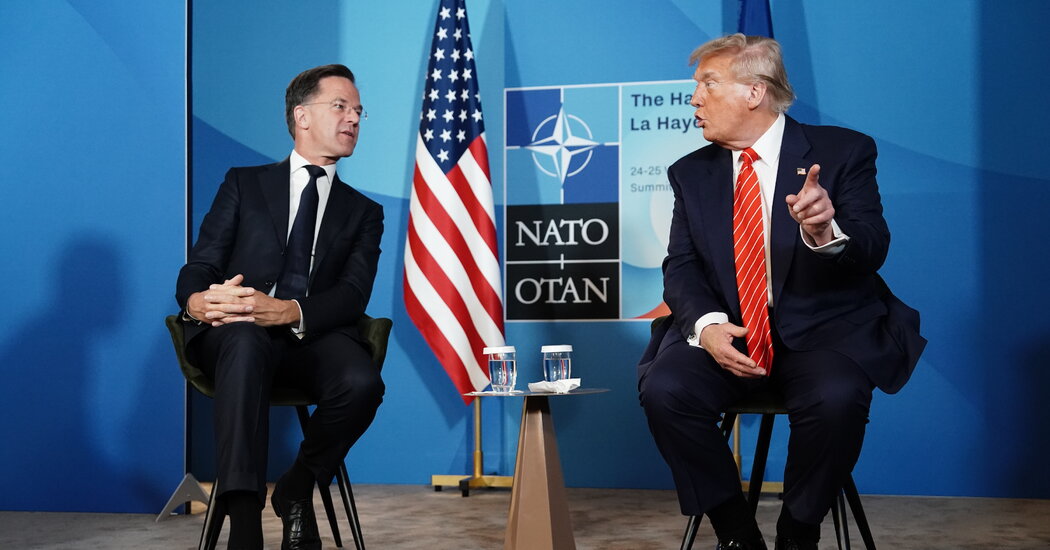NATO leaders agreed on Wednesday to a goal of spending 5 percent of their gross domestic product on defense. But that doesn’t mean each member nation will actually spend that much.
The difference lies in a bit of mushy diplomatic language that lets the NATO secretary general, Mark Rutte, claim that he delivered on a spending demand issued by President Trump. The brief and unanimously approved communiqué that NATO issued after leaders wrapped up their annual summit says that “allies” — not “all allies” — had agreed to the 5 percent figure.
Mr. Trump floated that target, up from the current 2 percent, early this year in a push to have Europe and Canada spend more on their militaries instead of relying on the United States for security. At the time, few believed it was realistic, given that nine of NATO’s 32 member countries still had not reached the 2 percent spending pledge that was set in 2014.
Several were balking at the 5 percent commitment as recently as Wednesday, emboldened by an assertion last weekend by Prime Minister Pedro Sanchez of Spain that “we’re not going to do it.” Mr. Sanchez said Spain would spend 2.1 percent of its G.D.P. on defense, “no more, no less,” because that was all his country needed to meet military capability targets set by NATO.
Spain currently spends about 1.28 percent of G.D.P. on defense, according to the most recent official figures available.
The language compromise, struck between Mr. Sanchez and Mr. Rutte last weekend, let both sides claim victory.
“This key change reflects our position: not all allies are bound to the 5 percent target,” the Spanish statement said last weekend, forecasting the communiqué language.
The wiggle room opened up by the “allies” wording emboldened other countries that have struggled to meet NATO spending targets.
“There are no special treatments for any member state — it is the same text, and if the interpretation of Spain is correct, anybody can interpret the text in the same way,” Belgium’s prime minister, Bart De Wever, said Wednesday.
He did not rule out spending 5 percent, adding that “we’re planning to do more.” But, Mr. De Wever said, he understood the “budgetary problems of his Spanish colleague, adding “we’re almost in the same situation.” Belgium spends about 1.3 percent of its G.D.P. on defense.
The prime minister of Luxembourg, Luc Frieden, also stopped far short of committing to the 5 percent goal. Luxembourg now spends about 1.29 percent, according to the latest data.
“Our goal is to continue to increase our collective effort in the years to come,” Mr. Frieden said.
The spending plans will be reviewed in 2029, and allies would have until 2035 — long after Mr. Trump has left office — to meet the 5 percent spending goal.
Mr. Rutte credited Mr. Trump for forcing what he has called a long-overdue discussion on military spending.
“Countries have to find the money,” he said Wednesday. “It’s not easy. These are political decisions. I totally recognize that. But at the same time, there is absolute conviction with my colleagues at the table that, given this threat from the Russians, given the international security situation, there is no alternative.”
Lara Jakes, based in Rome, reports on diplomatic and military efforts by the West to support Ukraine in its war with Russia. She has been a journalist for nearly 30 years.
The post Mushy Wording Lets NATO Commit to Trump’s Military Spending Demand appeared first on New York Times.




